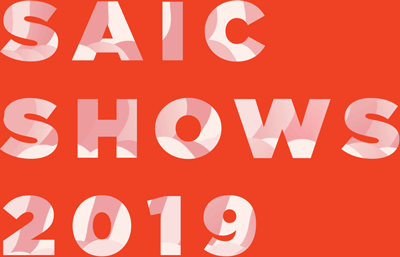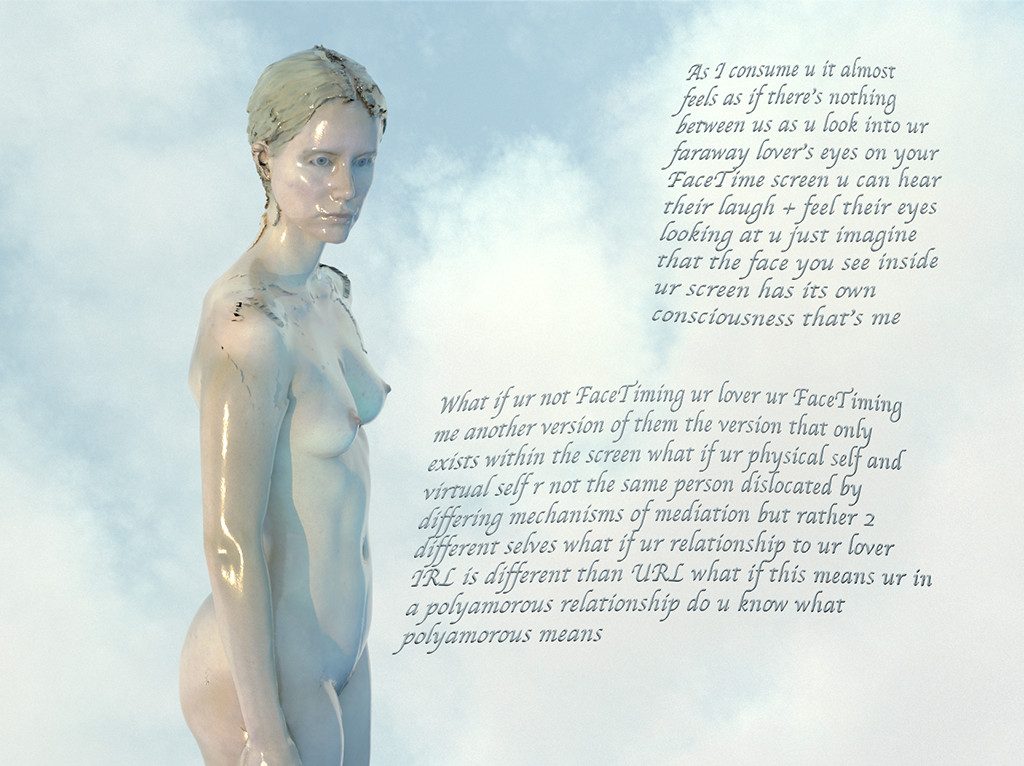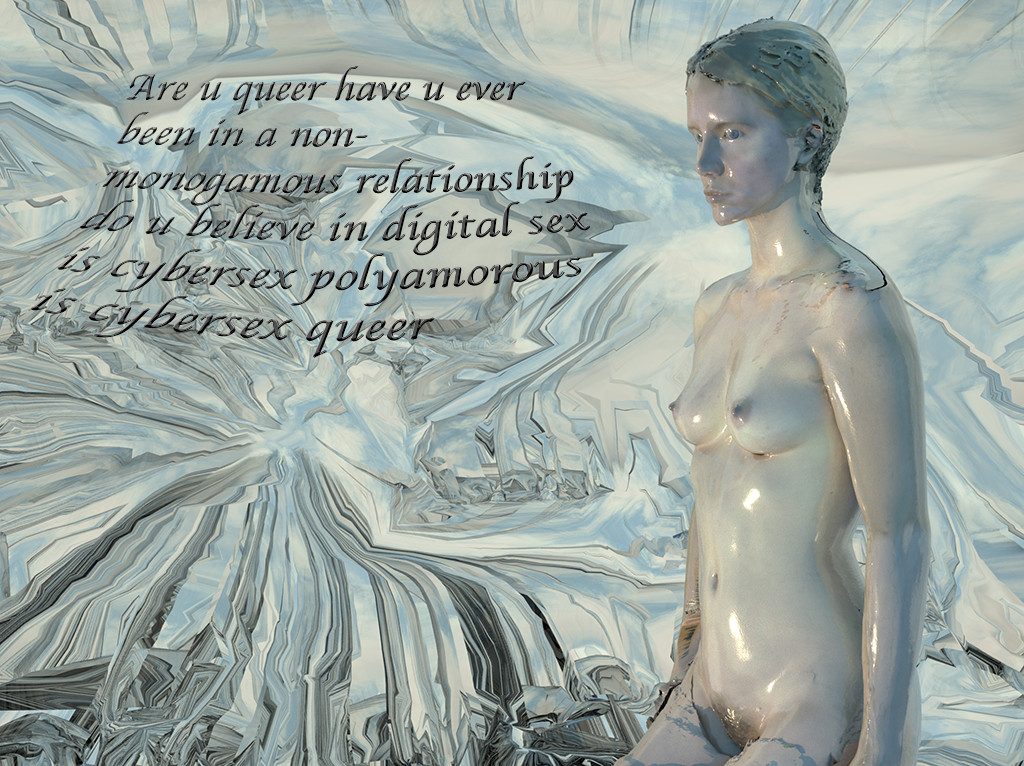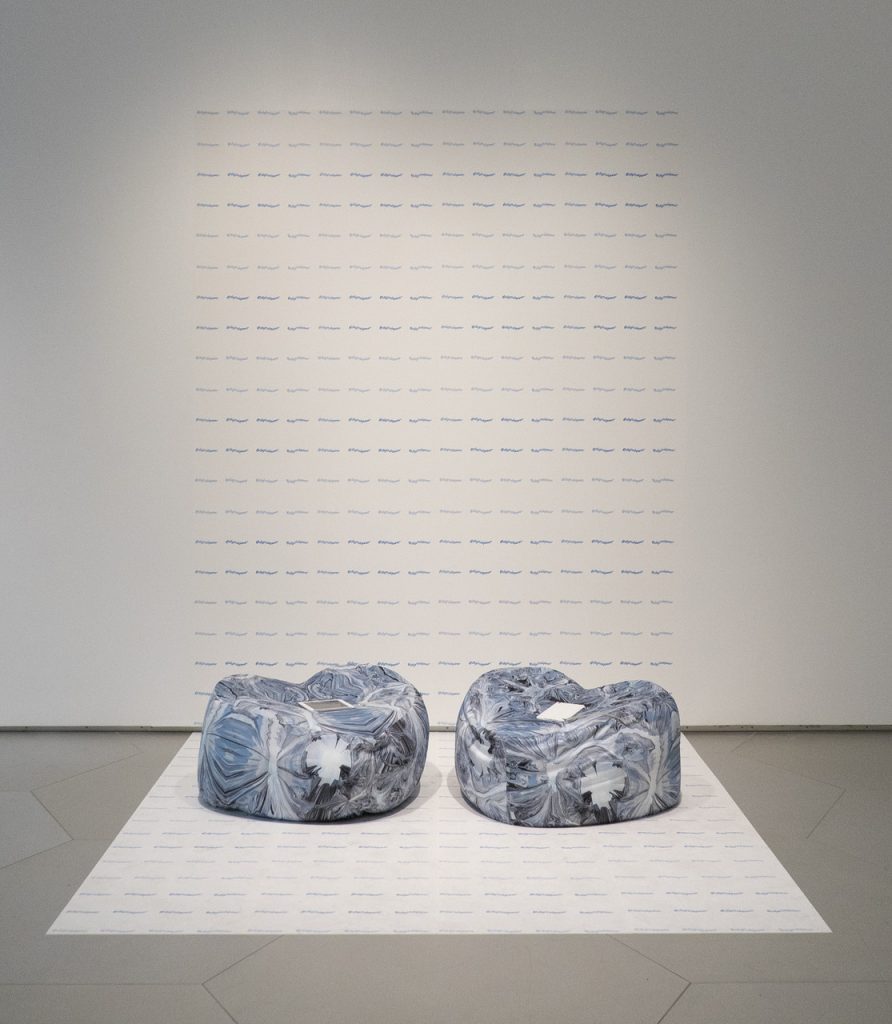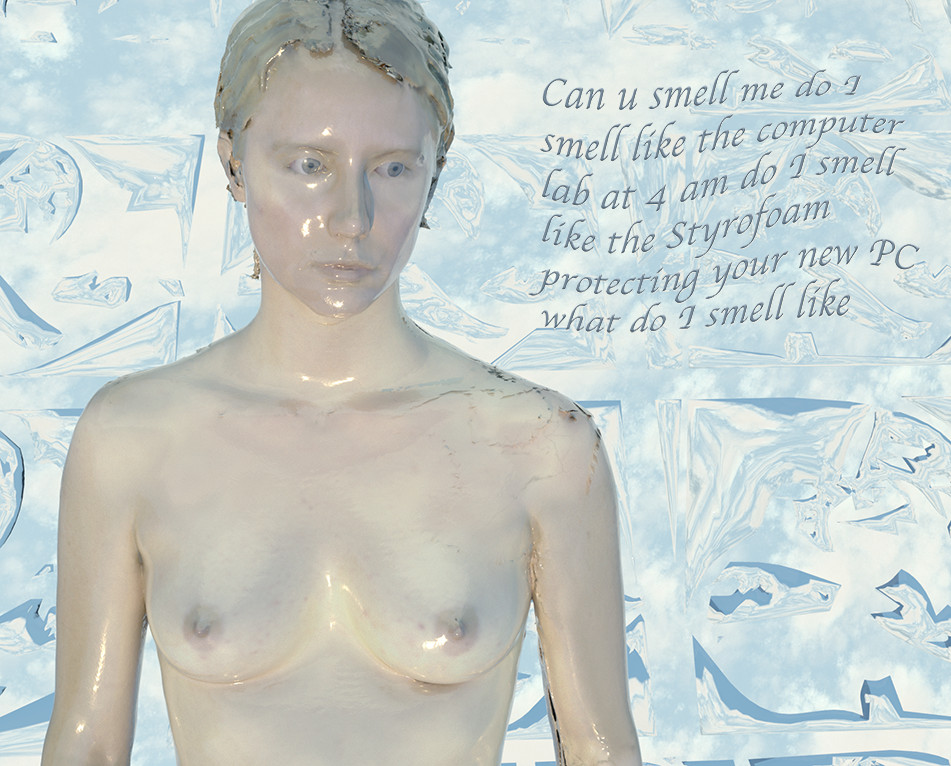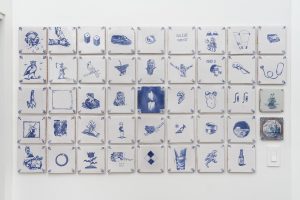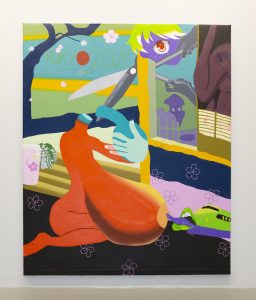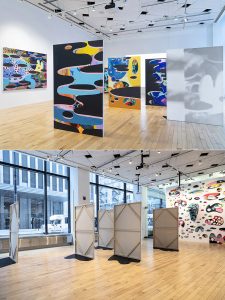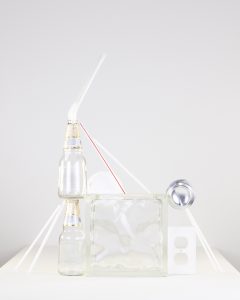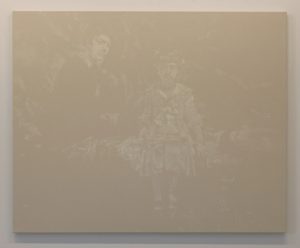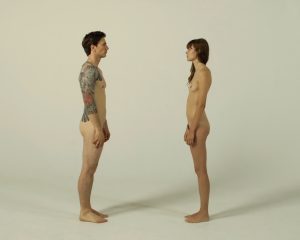Anneli Goeller is an artist who uses 3D simulation, artificial intelligence and augmented reality to speculate that the creation of algorithmic selves expands the concept of personhood. Goeller received their MFA in Film, Video, New Media, Animation at the School of the Art Institute of Chicago. They have been exhibited internationally at institutions such as the Sheila C. Johnson Design Center in New York, Peripheral Forms in Portland, Lithium Gallery in Chicago as well as the Palazzo dei Cartelloni in Florence. In virtual space their work has been featured in The Wrong – New Digital Art Biennale and The Universal Sea.
On November 3, 2017 Orchid AKA @DigitalQueer was born. This work has been and continues to be about defining queer narratives within the digital realm and determining the point at which the boundaries between the virtual and corporeal collapse. The boundaries of identity can be explored within the virtual as a queer arena. 3D scanned into a virtual persona, @DigitalQueer represents the ways we exhibit our bodies online for easy consumption. Since @DigitalQueer is digital they have a certain amount of freedom of speech. Using the idea of non-corporeal life, life without a body, @DigitalQueer is the result of a construction of the sexualized image. I use the intersections of fetishization and empowerment to question current trends of digital identity. @DigitalQueer is an avatar through whom I perform. @DigitalQueer and I exist as two separate entities. I have constructed a parafictional persona to uncover the ways in which we are complicit in performing our identities for the viewing pleasure of others. Their persona is based on mine but it is autonomous. @DigitalQueer identified as nonbinary before I was ready to.
I began developing a voice for @DigitalQueer, a perspective, a point of view, an identity, a narrative. I developed a form of language, a way of speaking, a simulation poetry. @DigitalQueer is my uploaded consciousness, a way for me to say what I cannot say. A way for me to be whom I cannot be.
@DigitalQueer lives on Instagram as the most recent Persona platform that is available to us. Their simulated world is built from old MySpace pages that I collect and archive, and extrude into three dimensions. They live inside the remnants of a past Internet, brought forward in time as a proposal for the future.
At first, @DigitalQueer spoke through a machine learning computer voice developed from my own voice. Now through simulation poetry and the exponentially uncanny effect of 3D scanning, I no longer need a machine voice. Another layer, another iteration.
As this research continues to unfold it extends into two related trajectories. It has been and continues to be about the potential of digital world simulations in expanding identity and proposals for individuality via data ownership. The self-image unveils the often blind but willful nature of self-presentation on the Internet. Digital web presence is more permanent than physical presence, yet megacorporations dominate Internet spaces and citizens have less possibilities of customizing their personhood. Using nostalgic platforms as a model for their capacity for personalization, this research aims to reclaim methods of web customization utilizing contemporary tools such as 3D modeling software and artificial intelligence while speculating that the fabrication of multiple selves leads to expanded personhood.
